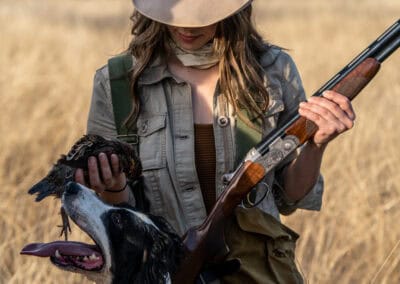Your cart is empty


A willingness to understand ideas and concepts which push our ideological boundaries creates a foundation for embracing the world with greater intention, fairness, and a more profound respect for disparate cultures and the greater web of eco-systems which span the planet.
In acknowledgement of the outstanding and vital content being created by journalists in other publications and media, we will be presenting a selection of stories each month that have helped us better understand our world.
These articles will span the spectrum of environmental, social and conservation issues which bind our lives together. This month we highlight two deceptively important stories focusing on the soil beneath our feet.
‘The Aliens to Watch’: how the humble earthworm is altering the Arctic
Invasive species can unpick the delicate stitching of an ecosystem with disastrous consequences. The evolution of flora and fauna allows for a dynamic exchange of survival, with each species occupying overlapping niches within their environment. The introduction of a new species has the potential to extirpate native inhabitants as they compete for similar resources. One need not look far to find the accidental consequences of such an introduction; the humble rat being one of the most well-known and devastating, carried around the world by humans as stowaways on ships.
Of course, species have been deliberately introduced as well, often in an attempt to deal with native species which were inconvenient for agriculture, or to use as food sources, other animal products, and of course for ‘sporting purposes’ and mere aesthetic value. The Victorian era, in particular, transplanted flora and fauna around the globe with unmatched enthusiasm, oblivious at the time to the long-term consequences.
Today we are accustomed to reading about invasive species, their negative impact, and our attempts to right previous actions. However, a recent article in the Guardian Newspaper highlighted a study published in Nature this year investigating the effects of a previously unstudied alien species in the Arctic. Listen up, this one has potential implications for climate change, and it’s a species you will be familiar with: the garden earthworm.
Transported to Arctic regions in the ballast of ships and on plants during European colonisation, this terrestrial invertebrate is making the Arctic regions more fertile, and yet, this is not a good thing.
“The effects caused by geoengineering earthworms were “as strong, or even stronger, than other important environmental drivers in the Arctic”, such as temperature increase, grazing animals and fertilisation using deer faeces, researchers wrote in their paper on the experiment.”
An increase in the fertility of soils improves plant robustness, accelerating growth rates and cover, which in turn has the potential to absorb more heat as plants protrude from snow cover, further accelerating snowmelt.
With the global spread of SARS-CoV-2, there is a heightened awareness of how the movement of people around the planet can transport unwanted viral hitchhikers, quickly and with devastating consequences. Specific sectors of the outdoor recreation community are well versed in such risks, with anglers and canoeists accustomed to sterilising equipment to prevent water-borne diseases crossing watersheds — partiality between countries. In the UK most fishing huts have warning notices and information on Gyrodactylus salaris adorning the walls. This parasite is found in mainland Europe, occurring naturally in the Baltic regions, and has been responsible for population losses of Atlantic salmon in infected Norwegian rivers of up 98%. The visceral impact of such mass mortality accelerates action and awareness, but the steady march of invasive plants, carried as seeds on the shoes of tourists, or the historic relocation of earthworms to the Arctic, hide in the shadows of our ignorance.
As we emerge out of the current pandemic and stretch our legs with travel once more, we must consider how we impact the landscapes we visit.
Read the full story by Phoebe Weston | Read the source paper in Nature
In the Scottish moorlands, plots planted with trees stored less carbon than untouched lands: Study
In many ways, land use and land ownership sit at the core of conservation. How does society value and incentivise appropriate management of the landscape around us for the outcomes which best serve our needs? To answer this, we first need to agree on what our needs are, and this is where things get complicated. Our need for food and resources drive a thirst for encroachment into uncultivated spaces, squeezing the available habitat for wild species into ever-decreasing parcels of land. A debate which swells with contentious consistency in Scotland centers around the drive to “rewild” our landscape, with a particular focus on tree planting — a move supported by most people, and seen as a reclamation of the wildlands we have lost.
This effort, backed and funded by the Scottish Government, is in aid of facilitating European biodiversity objectives, fulfilling a political will for perceived rewilding, and of course, is underpinned by the need to meet the Paris Agreement goals on climate change.
Most people with half an eye on the news will be aware of the basic concept of pulling carbon out of the atmosphere; an action which should stabilise the global rise in temperatures. Trees are an excellent facilitator of this, but as Liz Kimbrough points out in a recent Mongabay article, there is more carbon stored in our soils than in the plants and atmosphere combined. Understanding how to manage our soil systems is a critical component of tackling the climate crisis. This article highlighted a recent paper in Global Change Biology, identifying measurable impacts on carbon-sequestering from tree planting in upland areas. The forty-year study on test plots in Scotland found either no net gain in ecosystem carbon, or a net loss in comparison to un-planted dwarf shrub heath consisting of heather assemblages.
“Researchers involved in the experiment think soil priming may be one of the carbon culprits in this case. Tree planting, they hypothesise, dramatically altered the underground mycorrhizal (symbiotic fungal) communities, resulting in a net loss of carbon.”
This raises some critical questions about upland areas with similarly cold and wet climates around the world. If tree planting efforts in these regions offer zero net gain or worse — a loss in sequestered carbon — then we need to re-evaluate the justification for investment in such an endeavour. Unquestionably tree planting is a re-engineering of the current ecosystem. In Scotland, some of the designated areas occur on heather moorland, already identified as globally significant for biodiversity, with more than 70% of global coverage in the United Kingdom. Shifting to a mixed deciduous woodland in these areas may not achieve the outcomes society believes they are getting. It may look like a “wilder” unmanaged landscape — a return to nature — but aesthetics are the superficial detractor of less glamorous on-the-ground science.
Understanding the biodiversity shift of landscape-scale change is essential, and we must critically consider our ability to safeguard the habitat and carbon stores which go hand in hand. The considerable and present risk of wildfire needs to be at the forefront of our mind, and an acceptance that fire mitigation and management of fuel loads will become a vital component of our climate change obligations.
With mounting science around the importance of managing carbon stored in our soils, we need to understand better the trade-off between managed, seasonal burning for fuel load reduction, and the long-term probability of high-temperature fires and the associated impact on sub-surface peat stores. It is conceivable that tree planting in these regions does not provide adequate protection of these carbon stores, which accumulate at a subdued rate owing to the low energy nature of the system. We have a lot to understand, and science gives us the roadmap.
Read the full story by Liz Kimbrough | Read the source paper in Mongabay
Amazon ‘women warriors’ show gender equality, forest conservation go hand in hand
Why deforestation and extinctions make pandemics more likely
Swiss to ban foreign trophy hunters from killing Alpine ibex

BYRON PACE | INTERNATIONAL EDITOR
Byron Pace found himself hunting and fishing from almost as soon as he could walk, his father laying the foundations for a passion centered on exploring the outdoors. This would become the guiding force for most of his life decisions. He began creating content for international hunting publications soon after leaving school, continuing through his studies in economics, graduating with first class honors. A desire to explore would see him involved in big game capture in Africa, building up an experience of wildlife management at home and abroad through further study and time on the ground. Today, he and his brother, Darryl, run their own film production company and podcast, Into The Wilderness, focused on improving the understanding of conservation and the management of wildlife around the globe.
Related Stories



Latest Stories


